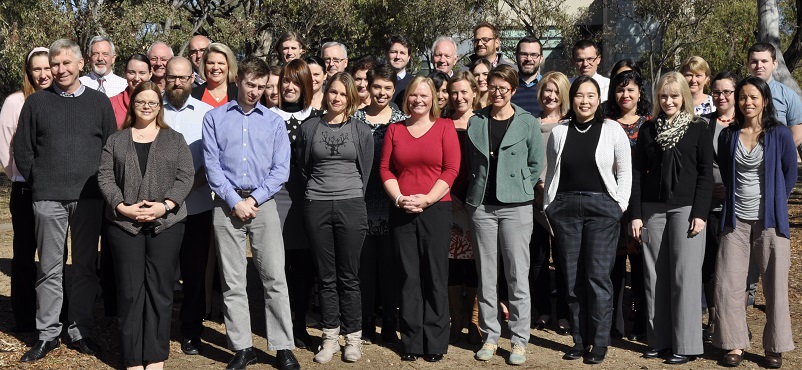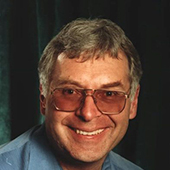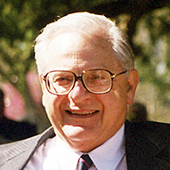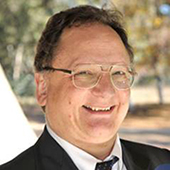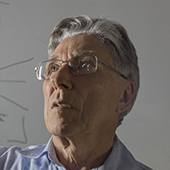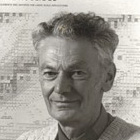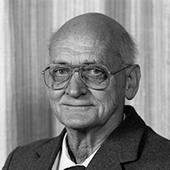The Australian Academy of Science champions, celebrates and supports excellence in Australian science, promotes international scientific engagement, builds public awareness and understanding of science and provides independent, authoritative and influential scientific advice.
Highlights
Our top achievements
- Growth of SAGE
- Immunisation Q&A launch
- More engagement with parliamentarians
- Australian Brain Alliance launch
- Future Earth Australia launch
- Chemistry and maths decadal plans launch
Thank you to our donors

With private gifts and bequests we have created world-class education programs which are now used by schools across Australia. We have recognised outstanding scientists for their contributions to our understanding of science across many disciplines and have given generations of scientists the opportunities to travel and to engage with other scientists across the world. And we have interested many thousands of Australians in science. None of this would have been possible without our generous donors, and we thank them.
Find out more about donating to the Academy
Welcome
Academy President
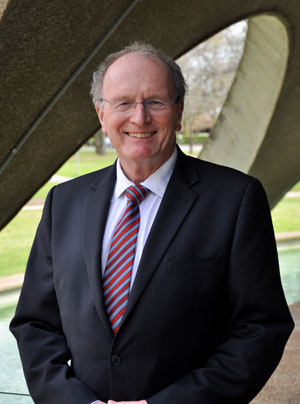
I’d like to present the 2016 annual report of the Australian Academy of Science.
Our many achievements during the year clearly demonstrate the Academy’s continuing commitment and ability to shaping the future of science in Australia and globally.
Our influence remains strong and, in many cases, has continued to grow, including in our interactions with government and policymakers, in developing leading education programs that support our children to understand the world around them, in advancing programs to promote equity and diversity in our sector, and in our active participation with international bodies.
The Academy also continues to provide support to the growing Early- and Mid-Career Researcher Forum as future leaders in and around STEM.
Donations from our supporters are critical to our work. Donations from individuals and organisations, and government grants, ensured that we continued supporting scientists to challenge and extend their knowledge and networks. External support has allowed the Academy to produce its science explainer website, Nova: science for curious minds, which provides excellent information to broad national and international audiences. Generous donations have supported our public lectures bringing leading scientists to people across Australia and have seen many of the Academy’s awards reach a more sustainable footing. We are very grateful for the support we have received, from the small to the large, and would not be able to function without it.
Continued strategic planning by the Academy’s Council, the involvement of many Academy Fellows in a broad range of activities, a greater focus on equity and diversity, and a strong operational base have enabled the Academy to meet, and in many cases exceed, its goals. I thank the Chief Executive, Ms Anna-Maria Arabia and the Academy Secretariat for delivering such a strong program.
I warmly invite you to look at our annual report and hope you are inspired as I was by our achievements.
Professor Andrew Holmes AC PresAA FRS FTSE
Academy Chief Executive
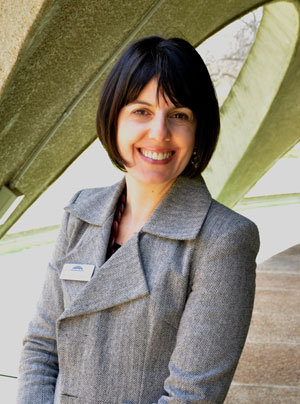
Welcome to the Australian Academy of Science’s Annual Report for 2016.
The staff of the Academy are charged with delivering the strategic priorities set by the Fellows. Every day we strive to achieve operational excellence such that it reflects the excellence within the Fellowship.
The year has seen a significant investment in time and energy to improve our practices. Our efforts have seen improvement in communication within the Academy and awareness of the Academy’s diverse activities amongst a range of stakeholders including the STEM sector, the broader public, parliamentarians, industry and the media. The Academy has taken a more strategic approach to the delivery of its education programs with Primary Connections, Science by Doing, and reSolve: Mathematics by Inquiry each reporting increased take up and awareness by teachers and students. Equally, SAGE—Science in Australia Gender Equity—is seeing record levels of engagement with universities, publicly funded research agencies and medical research institutes so that together we can overcome persistent barriers to equity and diversity in the STEM sector.
The international team, ably led by Nancy Pritchard, continues to foster strong ties in the international science community, enabling the work of the Academy to be far reaching and conversely allowing the Academy to benefit from global expertise. Nancy celebrates 25 years of service at the Academy in 2017 and I wish to express my deep appreciation for her professionalism and dedication.
I am pleased that significant inroads have been made in partnering with organisations that share the Academy’s commitment to science and innovation and who recognise its importance to Australia’s prosperity. This includes renewed efforts by the Academy to engage with industries and organisations that seek knowledge and expertise from scientists to evolve their businesses.
Over the years, the Academy has supported a number of national initiatives in their start-up phase. 2016 was no exception with Future Earth Australia and the Australian Brian Alliance experiencing strong and promising starts, and UNCOVER continuing to gain momentum. Staff at the Academy have worked with talented and energetic National Committee members to develop decadal plans for chemistry and mathematics and the Policy team has led a broad range of reports and submissions to influence the public discourse and policy landscape.
I have valued the support and guidance of the Academy’s 17 Councillors and 7 Executive Committee members. I wish to thank all the staff at the Academy, whose ability, enthusiasm and dedication impress me every day.
I trust you will enjoy reading this annual report which provides further insight into the impressive work undertaken by the Academy’s Fellows and staff.
Anna-Maria Arabia
Influential voice
Australian Brain Alliance
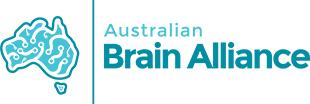
The Australian Brain Alliance was formed by members of the National Committee for Brain and Mind in early 2016. It aim to facilitate greater communication and collaboration across the Australian brain science community, and to advocate for a national brain research initiative to improve treatment of psychological and neurological diseases, deliver economic growth through neurotechnology industries, and create new approaches to teaching and learning throughout the lifespan.
In its first 12 months of operation, the Alliance has succeeded in bringing together all of Australia’s major neuroscience and psychological research and professional organisations, and has established strong links with international brain initiatives and with industry. With a communications strategy aligned to the next Federal election and funding contributed by its 33 member organisations, the Alliance is now focused on engaging with elected representatives and developing the science strategy and business plan that will be required to make a compelling case for public investment.
Future Earth Australia
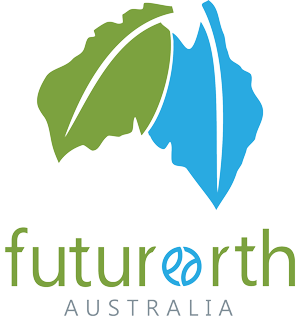
We took the lead on Future Earth Australia, part of the international Future Earth Program. Future Earth is a major international research program sponsored by the Science and Technology Alliance for Global Sustainability which has leveraged over $10 billion to support sustainability research around the world. This funding has enabled more than 60,000 scientists to focus their research to address this vital issue.
We held a two-day Future Earth sustainability workshop in April that brought together leading thinkers from Australia and the region to discuss the complex interplay of environmental, economic, cultural and social issues and to examine ways to enable Australia to design a sustainable future.
The launch of Future Earth Australia in November followed an 18-month consultation and planning process involving each of Australia’s learned Academies that was funded by the Australian Council of Learned Academies (ACOLA).
We appointed Dr Imran Ahmad to oversee this ambitious program. Supported by the Academy, Future Earth Australia is a partnership of Australian universities and research institutes with industry, government and civil society to advance sustainability. Current partners include CSIRO, the Australian National University, the University of Sydney, Macquarie University and the University of Queensland.
More about Future Earth Australia
Submissions to government and position statements
12 submissions and responses to government
6 position statements
We made submissions to the Australian Government relating to research, innovation, education, regulations, funding, data and infrastructure.
We also published statements communicating our position in relation to research quality, science priorities, defence, and the protection of scientists and scientific collaboration globally.
See our submissions and position statements
Decadal plans for chemistry and mathematics
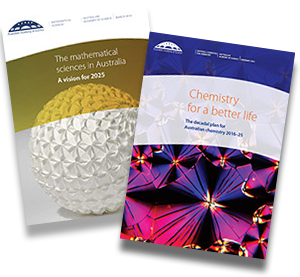
We worked with key research and industry stakeholders to develop ten-year plans for the disciplines of mathematics and chemistry, outlining priority areas of research and providing a roadmap for the future of the disciplines. The plans detail the education and training, public engagement and investment that will be required to allow these underpinning disciplines to realise the full potential of their value to Australia’s social wellbeing and economic prosperity.
The chemistry plan was launched at an industry event in Melbourne in February and the mathematical sciences plan was launched by the Minister for Education Simon Birmingham at Parliament House in March.
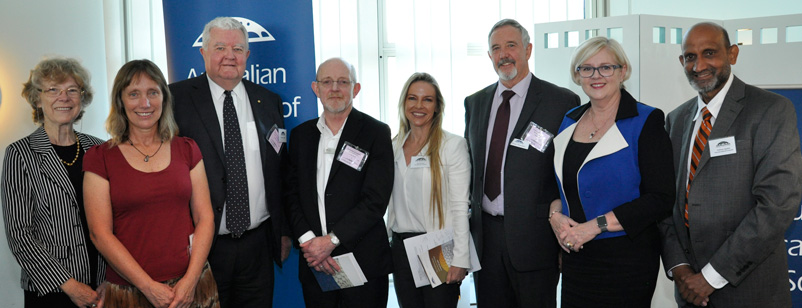
Direction and strategy setting for most scientific disciplines in Australia is undertaken by the Academy’s National Committees for Science, with support from government, industry and research organisations. Many professional bodies, universities and research organisations contribute financially to the development of plans, without which the projects would be unfeasible.
These organisations also contribute in-kind support and provide essential intellectual input. The many organisations that support the production of these documents are listed on the plans’ websites and within the individual publications.
Women of science at the National Press Club
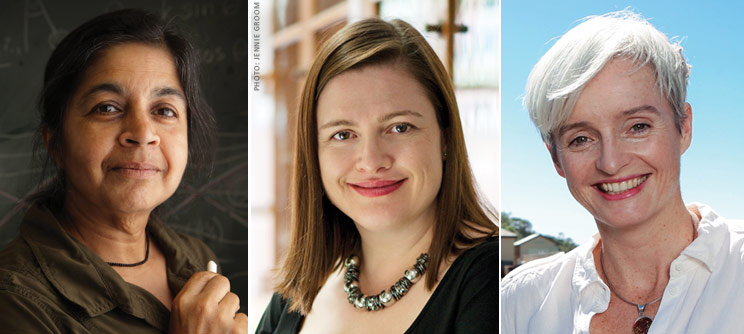
We worked with the National Press Club to put together a panel discussion with three leading scientists on the issue of women’s participation in science. ‘The future of science: women’ was held at the National Press Club in Canberra and broadcast live nationally on ABC TV in March.
Women comprise more than half of science PhD graduates and early-career researchers but only one-fifth of senior science academic positions. Academy Fellows Professor Nalini Joshi FAA and Professor Tanya Monro FAA FTSE joined Professor Emma Johnston to explore barriers to women’s participation, how they differ from those in other sectors, and new ways to overcome the silent brain drain affecting Australian science.
Immunisation Q&A booklet revised
Minister for Health the Hon Sussan Ley MP joined the presidents of the Australian Medical Association and the Australian Academy of Science, Nobel Laureate Professor Peter Doherty AC FAA FRS and paediatrician Dr Michael Freelander MP in October to launch the Academy’s booklet, ‘The science of immunisation: questions and answers’.
We revised the publication in response to renewed concerns around immunisation rates. Around 72,000 printed copies of the newly revised and updated booklet that was first published five years ago were distributed to doctors’ offices, clinics and other locations where immunisations are carried out in Australia.
The booklet provides the most up-to-date information from some of Australia’s leading researchers in immunology in a simple and impartial way.
The reprinting and distribution of the booklet was supported by the Australian Government Department of Health.
Influential reports
The Academy and its partners released five major reports aimed at assisting policy-makers and sectoral leaders to make informed decisions:
Engagement with parliamentarians

Academy Council Members and Fellows met with 67 federal MPs and senators—more than one-quarter of the Australian Parliament—to talk about the importance of science to Australia’s future, and the role of the Academy in supporting scientists and research outcomes. This led to:
- significant input into important science policy frameworks including the National Science Statement, the National Research Infrastructure Roadmap and the CSIRO Statement of Expectations
- attendance of ministers and shadow ministers at Academy events
- strong media interest in Academy policy reports and recommendations.
International engagement
Major links with other countries
We developed an international strategic plan 2016–18 to guide our engagement in international scientific networks and activities. The plan will help us to contribute Australian expertise and leadership in regional and global science networks, facilitate Australian access to global science and technology, and link Australian and overseas researchers. It focuses on South East Asia, global networks and international partnerships.
We have a long history of working successfully with overseas organisations to bring Australian and overseas researchers together. In 2016 we managed a number of international exchange programs and activities around the world.
Australian and overseas researchers supported by the Academy to travel internationally


- Country
- Australia
- Total outgoing researchers
- 106
- Total incoming researchers
- 63

- Country
- New zealand
- From Australia
- 4

- Country
- USA
- To Australia
- 31
- From Australia
- 1

- Country
- China
- To Australia
- 17

- Country
- Indonesia
- To Australia
- 74
- From Australia
- 8

- Country
- Brazil
- To Australia
- 6

- Country
- Germany
- To Australia
- 3
- From Australia
- 12

- Country
- Japan
- To Australia
- 3
- From Australia
- 26

- Country
- France
- To Australia
- 2
- From Australia
- 18

- Country
- India
- To Australia
- 1
- From Australia
- 14

- Country
- United Kingdom
- To Australia
- 1
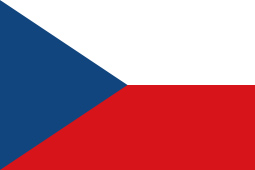
- Country
- Czech Republic
- From Australia
- 1
Multilateral engagement
We are represented on the executive boards of the IAP for Research and the IAP for Science. Our representatives attended the annual meetings of the IAP for Research in South Africa and the IAP for Science in China.
Our Foreign Secretary Professor Cheryl Praeger AM FAA was elected as a member-at-large to the executive board of the Association of Academies and Societies of Sciences in Asia (AASSA). As part of this role she was appointed Chair of a committee for Women in Science and Engineering (WISE), which promotes issues faced by women in science and engineering in the Asia–Pacific region.
Bilateral engagement
We engaged with overseas science academies, international scientific organisations and funding agencies, as well as foreign embassies in Canberra and Australian embassies abroad, to identify areas of mutual scientific interest and to foster opportunities for collaboration.
During the year, Academy President Professor Andrew Holmes AC PresAA FRS FTSE and Foreign Secretary Professor Cheryl Praeger AM FAA, or their representatives, met with embassy officials and international scientists from several countries, including:
- Dr Lino Barañao, Minister for Science, Technology and Productive Innovation of Argentina
- Professor Teatulohi Matainaho, Chairman of the Papua New Guinea Research, Science and Technology Council and Chief Executive Officer of the PNG Research, Science and Technology Secretariat
- Prof Oscar Moze, Science Attaché, Embassy of Italy, Canberra, who organised the event ‘Italian scientists down under’ at the University of Western Australia
In September, Professor Holmes and Professor Praeger participated in the 350th anniversary celebrations of the Académie des sciences – Institut de France (French Academy of Sciences). Representatives of more than 50 foreign science academies signed a joint statement on the vital role of science in the progress of humanity.
Focus on Indonesia
Indonesia is a priority country for the Academy due to its proximity to Australia and forecast economic growth. During the year, we participated in five major joint activities that strengthened our collaborative relationships and supported scientists from both countries.
A world of science
Falling Walls Lab Australia
Together with the German Embassy in Canberra, the Academy hosted the first Falling Walls Lab Australia in August. Falling Walls Lab Australia provided a platform for 20 Australian and 5 New Zealand excellent young scientists and social scientists, academics, entrepreneurs and professionals from all disciplines to present their research work, business model, innovative project or idea in front of peers and a distinguished audience from academia and business. Each participant had just 3 minutes on stage.
The panel of nine eminent judges from academia, business, government and finance included Australia’s Chief Scientist Dr Alan Finkel AO FAA FTSE and Vice-Chancellor of the Australian National University Professor Brian Schmidt AC FAA FRS Nobel Laureate. The panel judged the entrants, with Dr Kim van Netten from the University of Newcastle winning the event. Dr van Netten later represented Australia at the Falling Walls Lab Finale in Germany in November.
Australian–French Entrepreneurship Challenge
The Australian–French Entrepreneurship Challenge was held in June. The aim of the challenge was to teach PhD students entrepreneurial skills, equipping tomorrow’s business leaders with the knowledge to boost the global competitiveness of Australian research and industry.
We found support and encouragement for innovation everywhere: from undergraduate programs, to commercialisation support for research labs, to start-up accelerator programs. Members of the winning team on their study tour of France
The winning team created a start-up project called Guardia—a rapid, on-site detection of Giardia concentration in water using a low-cost, clip-on smartphone device.
Four members of the team—John Rivers from the Australian National University, Amanda Vrselja from Monash University, Spence Richardson from the Australian National University and Linda Khong from the University of Notre Dame—travelled to France in September as part of a study tour organised by the French Embassy in Canberra, to learn about the French culture of innovation and entrepreneurship. Lara Bereza-Malcolm from La Trobe University and Ariel Zeleznikow-Johnston from the University of Melbourne organised travel at a later date.
The challenge was supported by the Academy, the Department of Industry, Innovation and Science, the Embassy of France in Australia and the Australian National University, and sponsored by AIRBUS Group Asia Pacific, DCNS, KILN Incubator and Engineers Australia.
Japan Society for the Promotion of Science Alumni Association in Australia
The Japan Society for the Promotion of Science (JSPS) invited us to create a JSPS Alumni Association in Australia (JSPSAAA). The purpose of the association is to engage Australian scientists with past, current or possible future collaborative links with Japan to enhance the strong bilateral science and research relationship between the two countries.
Membership of the association opened in August and by end of year had more than 200 members. The inaugural executive committee was elected in October.
Australia–Brazil PhD Exchange Program
This exchange provided a more detailed understanding of the research currently underway at UNSW and across Australia, allowing new opportunities for collaboration … to be identified. Lucas Nascimento, participant in the Brazil PhD student exchange program.
In March, we welcomed six Brazilian students who were the first to participate in a new, multi-year program organised by the Academy. The program aims to provide Brazilian second- or third-year PhD students research experience in Australia, orientation to the Australian culture, and an introduction to the science and research infrastructure of Australia.
Despite spending just eight weeks conducting research, some early but outstanding outcomes were achieved. Multiple papers were drafted and submitted to relevant journals for publication and one student presented an overview of his research at a public seminar at the UNSW School of Photovoltaic and Renewable Energy Engineering. Another student was instrumental in the establishment of a multi-centre, multilateral project on transcranial magnetic stimulation (TMS). The collaboration will enable TMS technology created at Harvard University to be shared with Australian and Brazilian research institutions.
The program was made possible with funding from the Australian Government Department of Education and Training. The department will fund further rounds of the program in 2017 and 2018.
ASPIRE prize
The ASPIRE prize recognises young scientists from APEC economies who have demonstrated a commitment to both excellence in scientific research, as evidenced by scholarly publication, and cooperation with scientists from other APEC member economies. APEC economies are invited to nominate one scientist under 40 to be considered for each year's prize.
We managed the call for applications for the ASPIRE prize in Australia. Dr Lee Baumgartner of Charles Sturt University was nominated to represent Australia for his work on food security and fisheries in developing nations. The two runners-up were Dr Margaret Hardy from the University of Queensland and Dr Wei Xu from Murdoch University. The APEC ASPIRE prize was awarded to Dr Hua Kuang of China.
Funding for the Australian part of the prize was provided by the Department of Industry, Innovation and Science.
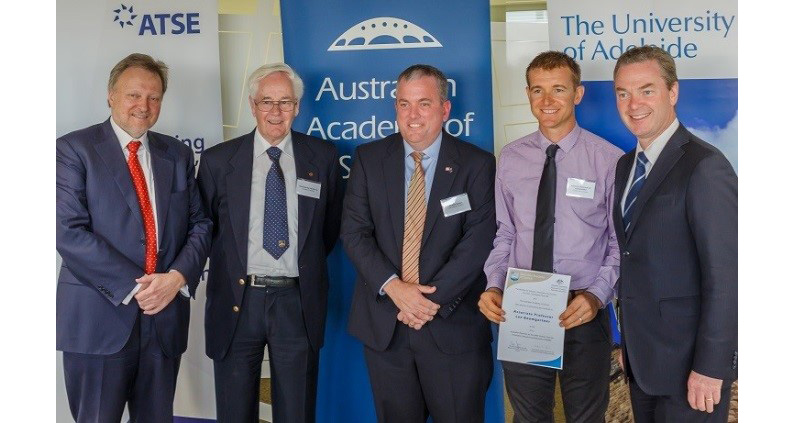
Australia–China symposium on advanced materials
We hosted the Australia–China Symposium on advanced materials, with experts from both countries exploring the fundamentals of advanced materials, advanced materials research, and the industrial applications of advanced materials. The Academy was joined by the Australian Academy of Technology and Engineering and the Chinese Academy of Sciences.
Early-career scientist visit to US
The collaborations this program has allowed me to build are invaluable and were the most important aspect of my trip, in addition to the original research that I will produce as a result of my visit. Ms Breanne Hobden, University of Newcastle
Through the Adam J Berry Memorial Fund, we supported early-career researcher Breanne Hobden to visit the National Institutes of Health (NIH) in the United States. Ms Hobden is a PhD student at the University of Newcastle whose research focuses on depression management for people with comorbid alcohol dependence.
During her six-week visit, Breanne worked with Dr Lorenzo Leggio at the National Institute on Alcohol Abuse and Alcoholism and the National Institute on Drug Abuse to research the impact, treatment and outcomes of alcohol use disorder and depression.
Lindau Nobel Laureates Meeting
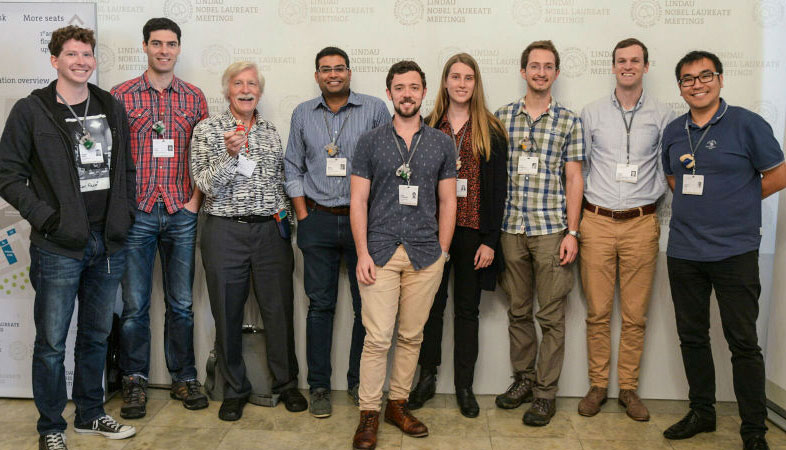
In June and July, the Science and Industry Endowment Fund (SIEF) supported eight young researchers to attend the 66th Lindau Nobel Laureate Meeting, dedicated to physics. Under a memorandum of understanding between the Academy and the Lindau Foundation, the Academy supports the attendance of Australian-based researchers with funding from SIEF under the Science and Industry Endowment Fund–Australian Academy of Science Fellowships to the Lindau Nobel Laureates Meeting.
The young researchers participated in the week-long program that gave them the unique opportunity to interact with their scientific heroes, exchange ideas, gain exposure to areas in their chosen disciplines and establish new contacts and networks with their peers.
After the meeting, the Australians undertook a study tour in Hannover, designed to expose the students to world class physics research and equipment. This activity was supported by the Australian Government Department of Industry, Innovation and Science and organised on behalf of the Academy by the Australian delegation leader to Lindau for 2016, Professor Hans Bachor FAA.
In 2016 40% of the nominations put forward by the Academy to the Lindau Council were female. However, the final selection of attendees is at the discretion of the Lindau Nobel Laureates Meetings committee.
More about Lindau Nobel Laureates meetings
Heidelberg Laureate Forum
We supported one Australian-based computer scientist to attend the fourth Heidelberg Laureate Forum in September. The forum is an annual networking event that offers mathematical and computer scientists the opportunity to meet with the laureates of the most prestigious prizes in their fields: the recipients of the Abel Prize, the ACM A.M. Turing Award, the ACM Prize in Computing, the Fields Medal and the Nevanlinna.
In 2016, for the first time, successful Australian applicants in computer sciences were eligible to apply for support from the Science and Industry Endowment Fund – Australian Academy of Science Heidelberg Laureate Forum Fellowship. We are grateful that the funding will be ongoing until 2020 in a partnership with the Science and Industry Endowment Fund. This opportunity complements the AMSI/AustMS Heidelberg Laureate Forum Travel Fund, which provides competitive travel grants for successful Australian forum applicants in mathematics.
Scientific literacy
Primary science and literacy

Primary Connections continued to inspire primary teachers and students across Australia with its evidence-based teaching and learning approach to science.
Through the pairing of curriculum resources and professional learning, the program offers a practical way of implementing the Australian Curriculum: Science for younger students—boosting the confidence and competence of teachers, and developing students’ knowledge, understanding and skills in both science and literacy.
During the year we initiated new collaborations and partnerships, expanded our classroom resources, and broadened the professional learning opportunities for both pre- and in-service teachers across the country.
Professor David Craig’s bequest of $50,000, which at his request was directed to Primary Connections, will directly support the publication of four new Student Science Journals for Year 5 students to be published in January 2017.
A partnership with the Dahl Trust (now Eucalypt Australia) provided practical support for the development of a new curriculum unit by providing funding as well as expert advice to our authors. This collaborative project resulted in a new curriculum unit for teachers and supported Eucalypt Australia's objective of educating the wider public—particularly school children—about eucalypts. ‘Among the Gum Trees’ (Year 4, Biological Sciences) was published in January.
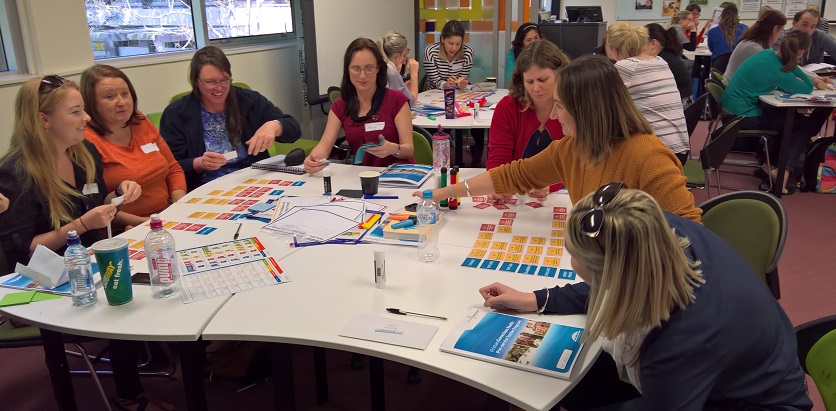
New curriculum resources
We produced:
12 journals to accompany each Year 3 and 4 curriculum unit
7 interactive teaching resources to offer digital support for the teaching of curriculum units
13 eucalypt identification cards to support the teaching of the 'Among the gum trees' unit
We distributed:
9,945 curriculum units
5,980 student science journals
We partnered with Primary Industries Education Foundation Australia (PIEFA) and Eucalypt Australia to develop and publish new curriculum resources. PIEFA’s support enabled us to produce a unit for year 6 students that explores the impact of changing weather patterns on our ability to produce food, while Eucalypt Australia supported the development of our ‘Among the gum trees’ unit and a set of eucalypt identification cards.
Growing professional learning
Great experience. Learned a lot about how I can incorporate technology into the science curriculum. Feeling very confident and excited to teach students. Technology trial workshop feedback
In response to the increasing focus on STEM, we developed a new workshop, ‘Teaching technology through science inquiry’, to help educators teach design technology in a primary science classroom.
With the continued support of the Australian government and philanthropic donations, we rolled out workshops across the country in rural and remote regions to train both in-service and pre-service teachers, including an introductory workshop made possible by the Academy’s Enlightening campaign to support schools with significant Indigenous enrolments. We thank all the donors for enabling us to upskill these teachers. Your generosity has already had a significant impact on not only the teachers, but also their students.
27 teachers and 8 pre-service teachers received Enlightening campaign bursaries to attend workshops in Victoria, Queensland, Tasmania and Western Australia
86 professional learning workshops delivered
In April, Ms Shelley Peers represented Primary Connections at the IAP Science Education Programme Global Council conference in Santiago.
Collaborations
We established a partnership with the Royal Society of Victoria to hold workshops and meetings in 2017 in return for supporting its science outreach program and enabling teachers to attend our professional learning.
We also partnered with BioLab, one of the Victorian science centres, to co-host professional learning in 2017, and formed a collaboration with Deakin University through its annual STEM Conference.
Secondary science

Science by Doing is a comprehensive online science program for Years 7 to 10 available free to all Australian students and teachers and supported by award winning professional learning modules and a research based professional learning approach. The program provides a practical way of implementing the Australian Curriculum: Science. The curriculum units and professional learning modules are found within the website.
Science by Doing improves science learning by better engaging high school students through a guided inquiry approach, and by supporting teachers with resources using innovative technology.
This multi-year program is funded by the Australian Government Department of Education and Training to a total of $10.3 million.
Curriculum units
Year 8 ‘Rock your World’ and Year 10 ‘Science Futures’ units published
All 16 science units for years 7 to 10 are now available, plus two general units ‘Introduction to Science by Doing’ and ‘Doing Science Investigations’.
We also developed a new prototype for the Year 7 unit ‘Enough Water Fit for Drinking’ which included a new student guide format, a simple e-Notebook in MS Word format that can be used in learning management systems like Google.doc or OneNote, and an extensively revised teacher guide. Based on this work, Year 7 curriculum units were updated and the remaining units will be updated in 2017–18.
Teacher education
Workshop for 33 university science educators was held.
487 pre-service teachers registered in the two months following the workshop.
Broad interest
Registrations for the Science by Doing website increased significantly during the year. Nearly 120,000 people were registered by year's end, including 57% of all Australian high school science teachers. 80% of all Australian high schools now have registrations. During the year we also made significant improvements to our website.
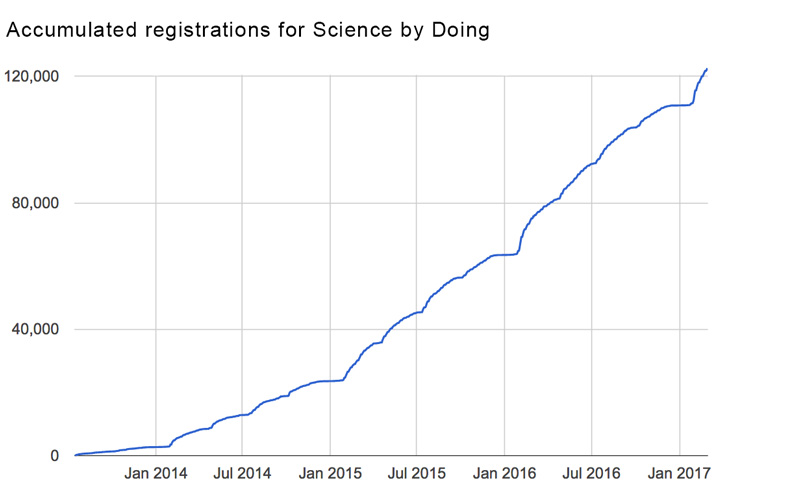
Primary and secondary mathematics

The reSolve: Mathematics by Inquiry program promotes innovative and engaging approaches to the teaching and learning of mathematics in Australian schools. It is funded by the Australian Government Department of Education and Training and run in collaboration with the Australian Association of Mathematics Teachers.
The reSolve: Mathematics by Inquiry Teaching Protocol, developed early in the year, provides the framework for teaching and learning resources. Its critical elements of quality mathematics teaching and learning are that reSolve mathematics is purposeful, its tasks are challenging yet accessible, and classrooms have a knowledge-building culture.
Lesson sequences for years 5 to 8 using 36 individual lessons were developed and trialled
3 professional learning modules were developed and trialled
400 expressions of interest were received from across Australia to trial resources
15 conference presentations were delivered, including 2 keynote addresses
We surveyed trial participants, which showed positive results and good feedback on how material could be improved; conducted briefings on the program in each state that were attended by teachers, mathematics education lecturers, university mathematicians and members of professional associations.
Nova: science for curious minds

Thanks to the generous support of Telstra, our Nova: science for curious minds website continued to bring science to broad Australian and international audiences with its engaging, accurate and relevant explanations of science. With all topics reviewed by Academy Fellows or other experts, Nova is an accurate and trustworthy source of information, presented in an accessible way.
188,000 people made 255,000 visits to Nova
49 topics reviewed by 125 experts were published
Most popular topics were about cosmetics, population growth and the greenhouse effect
Media and social media
32 media releases distributed
64 news articles published on our website
3,462 new followers on Twitter
5,139 Academy mentions in the media
6,658 Facebook page likes
119,330 views on the Academy’s YouTube channel
The science of climate change: questions and answers
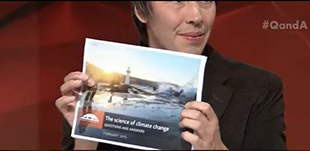
During energetic discussion in an August 2016 episode of ABC TV’s popular Q&A program, UK physicist, Professor Brian Cox, drew from the Academy’s booklet The science of climate change: questions and answers, holding the publication aloft as a source of reliable climate change information. For the 24 hours following the program, the Academy’s website experienced around five times the average number of daily visits, helped by media coverage of the program including The Daily Telegraph, The Australian and the ABC.
Events
Bionic eyes, melting Antarctic ice, 3D printing body parts and the language of fish bones were among the exciting topics covered at the three-day Science at the Shine Dome event. Our new Fellows and Academy awardees shared their research, and our annual symposium explored bionics, with and some of Australia’s leading researchers sharing the latest in bioengineering, bioelectronics, prosthetics and ideas for the future of bionics.
We held events for scientists and the public in locations across Australia, on science as diverse as drug resistance, the microbiome, recycling, life, death, sex, food and risk.
12 public events held by the Academy involving 67 speakers and attended by 2,553 people
12,748 people attended public and private events at the Shine Dome
$17,000 in ticket revenue earned from Canberra and nationals speaker series
Peer-reviewed journals
Historical Records of Australian Science is the Academy’s journal, published bi-anually by CSIRO Publishing on our behalf. Now fully online, it is improving its accessibility and reducing production costs. Fellows have free access to the online version via the Fellow’s section of the Academy website, and hard copies can be ordered from CSIRO Publishing for $110 per year (both editions).
Historical Records of Australian Science:
80 institutional subscribers
17,855 downloads
7 historical articles and documents
10 biographical memoirs
18 reviews
The Academy and CSIRO jointly publish 13 Australian journals of scientific research. The journals:
- cover a wide range of chemistry, biology, soil, wildlife and agriculture research
- have subscribers in 90 countries
- are free for scientists in more than 100 developing nations through the UN Research4Life programme.
Australian journals of scientific research:
Articles from the 13 journals downloaded nearly 1.3 million times.
116 issues published comprising nearly 15,000 pages.
Basser Library and Fenner Archives
We are currently working to preserve the historically significant holdings of the Basser Library (books and journals) and Fenner Archives (scientists' original collections). This work is based on the recommendations of an expert task force which provided advice to the Council of the Academy on future options for the library and archives.
We began a project to relocate historically significant items with publicly focused libraries, museums or other appropriate institutions where feasible, where they can be better cared for and be more readily accessible. Specifically, the Academy is preparing the collections in the Fenner Archives using best practice standards of archival preservation to make them findable and accessible, and managing relocation of manuscript collections from the Fenner Archives to other archival centres. This project is expected to be completed by the end of 2017.
Excellence in science
SAGE: Science in Australia Gender Equity
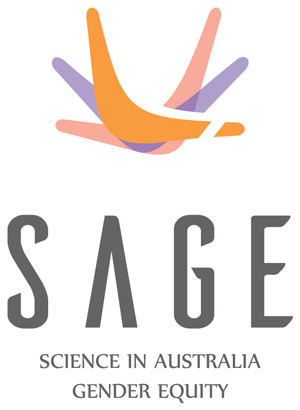
Women comprise more than half of science PhD graduates and early career researchers, but only 17% of senior academics in Australian universities and research institutes. The loss of so many women scientists is a significant waste of expertise, talent and investment that impacts on Australia’s scientific performance and productivity.
Following the successful launch of the joint national initiative between the Australian Academy of Science and the Academy of Technology and Engineering in September 2015, the Science in Australia Gender Equity (SAGE) initiative continued to expand and garner strong support from the STEMM in higher education and research sectors throughout the year. STEMM refers to science, technology, engineering, mathematics and medicine.
Building on these successes, the Australian Government committed $2 million to expand the SAGE program and enhance its governance and range of support services. With this support, the partner Academies:
- appointed an executive director, Dr Wafa El-Adhami, to oversee the implementation and development of SAGE into a sustainable model for the future
- established an advisory group, which brings together leading experts in higher education and research, including fellows of the academies and founders of the SAGE initiative. This group is chaired by Australia’s leading advocate of gender equality Ms Elizabeth Broderick, the longest serving Sex Discrimination Commissioner
- welcomed an additional 8 institutions to participate in the SAGE initiative, bringing the total to 40.
In June, SAGE held its inaugural symposium in Sydney, attracting 340 delegates and many high-profile speakers including Academy President Professor Andrew Holmes AC PresAA FRS FTSE, Australia’s Chief Scientist Dr Alan Finkel AO FAA FTSE, Chief Executive Equality Challenge Unit UK Mr David Ruebain, Ms Elizabeth Broderick AO and Ms Ita Buttrose AO OBE, among others.

SAGE rolled out an intensive support program comprising institutional visits, capacity-building workshops and regional network meetings. These provided valuable insights into the sector’s specific needs and demonstrated SAGE members’ commitment to gender equality and diversity. During the year, SAGE:
SAGE:
delivered 16 workshops for the 40 pilot participating institutions
completed institutional visits to 70% of institutions participating in SAGE
convened 12 regional network meetings.
SAGE also participated in a range of sector activities, contributing to national conferences and annual events of professional STEMM associations. Internationally, the team organised and facilitated the Women in STEMM tri-lateral workshop in India, funded by the Australian Government under the Australia–India Strategic Research Fund. The workshop brought together leading scientists, educators and policy makers from Australia, India and the UK, facilitating learning on gender equality policy and practice in the three countries. The tri-nation initiative attracted international presenters including Her Excellency Ms Harinder Sidhu, Australian High Commissioner to India and Sir Dominic Asquith, British High Commissioner to India, as well as Australian presenters Professor Veena Sahajwalla, UNSW Australia and Ms Jane Urquhart, Department of Industry, Innovation and Science. It provided an opportunity to share best practices and explore future opportunities to develop practical action plans in support of advancing career paths for women in STEMM.
Special thanks are due to the following for their support of the symposium:
- Universities Australia, Principal Sponsor. As the voice of Australia’s universities and strong supporters of gender equity in science, Universities Australia is a fitting partner to host an event involving representatives of 25 of Australia’s leading universities.
- Ernst & Young, a Discover Sponsor, is working to accelerate gender parity with their #WomenFastForward and Put Gender on Your Agenda campaigns.
- L’Oréal Australia, also a Discover Sponsor, is the leading cosmetic company in Australia. The L’Oréal-UNESCO For Women in Science program aims to promote the critical importance of ensuring greater participation of women in science.
- The Australian National Maritime Museum brought in-kind support through the sponsored use of its beautiful harbour-side venue.
- Department of the Prime Minister and Cabinet, Transform Sponsor.
- La Trobe University, Innovate Sponsor.
- Flinders University, Discover Sponsor.
SAGE gratefully acknowledges the contribution of its outstanding sponsors, each working to promote the cause of equity, diversity and the achievements of women in STEMM.
The Fellowship
505 Fellows at 31 December
29 Corresponding Members living overseas
38+ prestigious awards and honours received by Fellows
21 New Fellows elected in 2016 (including one by special election)
2 new Corresponding Members admitted to the Academy
New Fellows elected in 2016
The Academy elected 21 new Fellows, (including one by Special Election) from a diverse range of disciplines from across Australia. Six of the 21 were female scientists.
The new Fellows were inducted into the Academy at a ceremony held during Science at the Shine Dome in May.
-
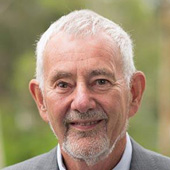 Ian Allison AO FAA GLACIOLOGY AND CLIMATE SCIENCE
Ian Allison AO FAA GLACIOLOGY AND CLIMATE SCIENCE
Ian Allison is a glaciologist who has greatly advanced our understanding of the role of Antarctica and sea ice in climate variations and the impact of climate change on the Antarctic.
-
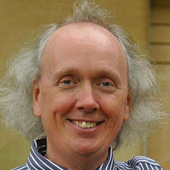 David Bellwood FAA ECOLOGY, EVOLUTIONARY BIOLOGY, MARINE ECOSYSTEMS
David Bellwood FAA ECOLOGY, EVOLUTIONARY BIOLOGY, MARINE ECOSYSTEMS
David Bellwood is a world leader in coral reef ecology. His pioneering work on reef ecosystems has revolutionized our understanding of the evolution of coral reefs and their capacity to withstand human impacts.
-
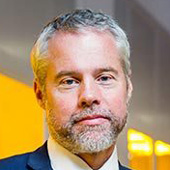 Benjamin Eggleton FAA PHYSICS, PHOTONICS, NONOTECHNOLOGY
Benjamin Eggleton FAA PHYSICS, PHOTONICS, NONOTECHNOLOGY
Ben Eggleton is a leader in integrated nanophotonics and nonlinear optical physics. He has made important contributions to optical communications technology with applications to chip-based, ultrafast and ultra-broadband, energy efficient information signal processing devices.
-
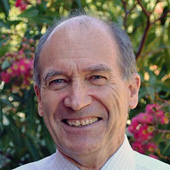 Geoffrey Fincher FAA PLANT BIOLOGY, AGRICULTUAL SCIENCE, BIOCHEMISTRY, GENOMICS
Geoffrey Fincher FAA PLANT BIOLOGY, AGRICULTUAL SCIENCE, BIOCHEMISTRY, GENOMICS
Geoff Fincher has made a distinguished contribution to cereal chemistry and the grains industry through his work on the structure, biosynthesis and digestion of plant cell walls. Plant cell walls play major roles in human and animal nutrition and as sources of biofuels and biopolymers.
-
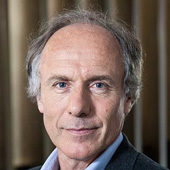 Alan Finkel AO FAA FTSE ENGINEER, NEUROSCIENCE, SCIENCE POLICY, RESEARCH COMMERCIALISATION
Alan Finkel AO FAA FTSE ENGINEER, NEUROSCIENCE, SCIENCE POLICY, RESEARCH COMMERCIALISATION
Alan Finkel has distinguished himself in Australia’s scientific and engineering community by his passion for science and engineering education at school, university and community levels, and by his creative leadership, initiatives, philanthropy and innovative scientific publishing. Dr Finkel was appointed Chief Scientist of Australia in 2016 and was specially elected by the Fellowship.
-
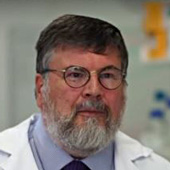 Simon Foote FAA MEDICAL SCIENCE, HUMAN GENETICS, IMMUNOLOGY
Simon Foote FAA MEDICAL SCIENCE, HUMAN GENETICS, IMMUNOLOGY
Simon Foote has played a key role in identifying the mechanisms of drug resistance to antimalarials. He also produced the first physical map of a human chromosome. Simon also works on the genetics of Aboriginal kidney disease.
-
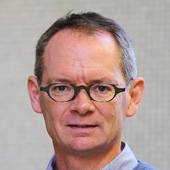 Justin Gooding FAA CHEMISTRY, BIOCHEMISTRY, ELECTROCHEMISTRY, NANOTECHNOLOGY
Justin Gooding FAA CHEMISTRY, BIOCHEMISTRY, ELECTROCHEMISTRY, NANOTECHNOLOGY
Justin Gooding uses electrochemistry, synthetic chemistry, interfacial physical chemistry, electron transfer theory, protein biochemistry, and cytochemistry, in order to modify surfaces at the molecular level to enable them to specifically recognise biochemical molecules and to transduce that biochemical information to the end user directly within biological fluids.
-
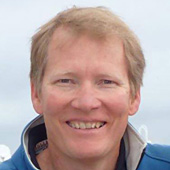 John Kirkegaard FAA BIOLOGY, AGRICULTUAL SCIENCE, NUTRITION, FOOD SECURITY
John Kirkegaard FAA BIOLOGY, AGRICULTUAL SCIENCE, NUTRITION, FOOD SECURITY
John Kirkegaard is an agricultural scientist who has made major contributions towards improving global agricultural productivity. His innovations in conservation farming systems have greatly increased the effectiveness with which crops use water and nutrients.
-
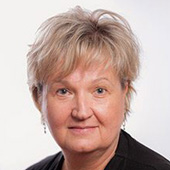 Anna Koltunow FAA BIOLOGY, AGRICULTUAL SCIENCE, GENETICS
Anna Koltunow FAA BIOLOGY, AGRICULTUAL SCIENCE, GENETICS
Anna Koltunow has made outstanding contributions to understanding plant reproduction. She discovered mechanisms controlling seedless fruit formation and has generated seedless fruit in crops.
-
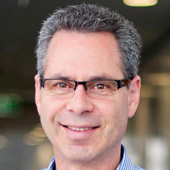 Geoffrey Lindeman FAA MEDICAL SCIENCE, BIOLOGY, STEM CELLS, GENOMICS
Geoffrey Lindeman FAA MEDICAL SCIENCE, BIOLOGY, STEM CELLS, GENOMICS
Geoff Lindeman and his team identified the stem and progenitor cells that generate all ductal tissue in the breast, in both mice and humans. His laboratory was the first to identify the culprit progenitor cell responsible for breast cancer in BRCA1 mutation carriers.
-
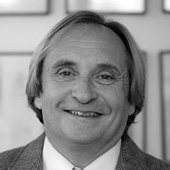 Alexander McBratney FAA BIOLOGY, AGRICULTURAL SCIENCE, SOIL SCIENCE
Alexander McBratney FAA BIOLOGY, AGRICULTURAL SCIENCE, SOIL SCIENCE
Alex McBratney is a world-leading soil scientist who conceived and developed pedometrics, digital soil mapping and soil security, radically strengthening the knowledge base of soil science. His contributions have revolutionised the availability of soil information and led to improved agricultural practices with reduced environmental impacts and enhanced security of the world’s soil.
-
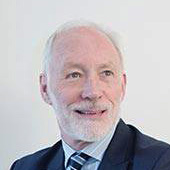 Patrick McGorry AO FAA MEDICAL SCIENCE, PSYCHIATRY, MENTAL HEALTH
Patrick McGorry AO FAA MEDICAL SCIENCE, PSYCHIATRY, MENTAL HEALTH
Patrick McGorry has created new concepts for psychotic disorders and a new clinical and research focus on youth mental health. His work has led to earlier diagnosis and better outcomes for young people with mental illness.
-
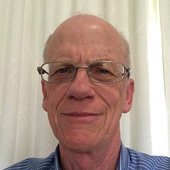 Neville Nicholls FAA EARTH SCIENCES, CLIMATE SCIENCE
Neville Nicholls FAA EARTH SCIENCES, CLIMATE SCIENCE
Neville Nicholls is the world’s pre-eminent expert on the nature, causes, predictability and impacts of inter-annual climate variability in Australia and its region. His research is the basis for operational prediction of climate variations and their impacts including droughts, crop yields, bushfire and tropical cyclone activity, and human health impacts, in Australia and elsewhere.
-
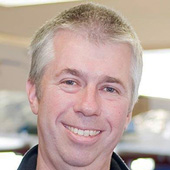 Stephen Nutt FAA BIOLOGY, IMMUNOLOGY, MOLECULAR GENETICS, STEM CELLS
Stephen Nutt FAA BIOLOGY, IMMUNOLOGY, MOLECULAR GENETICS, STEM CELLS
Stephen Nutt is renowned for his work on the molecular controls that determine how white blood cells develop and function to provide protective immunity. He has had a major impact on deciphering what goes awry in diseases such as leukaemia and autoimmunity.
-
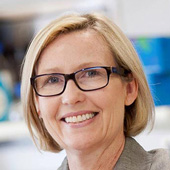 Sarah Robertson FAA MEDICAL SCIENCE, REPRODUCTIVE BIOLOGY, IMMUNOLGY
Sarah Robertson FAA MEDICAL SCIENCE, REPRODUCTIVE BIOLOGY, IMMUNOLGY
Sarah Robertson is a world-renowned reproductive biologist whose innovative research in has formed the basis for a new understanding of the origins of health at conception. Her discoveries are improving practise in reproductive medicine especially in fetal development and offspring health.
-
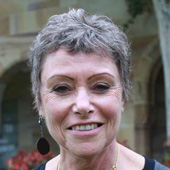 Halina Rubinsztein-Dunlop FAA PHYSICS, LASER PHYSICS, QUANTUM PHYSICS, QUANTUM OPTICS
Halina Rubinsztein-Dunlop FAA PHYSICS, LASER PHYSICS, QUANTUM PHYSICS, QUANTUM OPTICS
Halina Rubinsztein-Dunlop is recognised internationally for her achievements in laser physics, linear and nonlinear high resolution spectroscopy, laser micromanipulation, atom cooling and trapping and nano-optics. Her work on Dynamical tunnelling of ultra-cold atoms was one of the experimental milestones in quantum chaos.
-
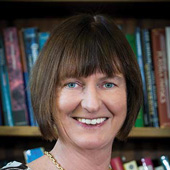 Susan Scott FAA PHYSICS, GRAVITATIONAL PHYSICS, COSMOLOGY RELATIVITY
Susan Scott FAA PHYSICS, GRAVITATIONAL PHYSICS, COSMOLOGY RELATIVITY
Susan Scott has made ground-breaking discoveries in the fields of general relativity and gravitational wave science. Her theoretical work includes advancing our understanding of both singularities and the global structure of space-time. Professor Scott has also been a pioneer in the analysis of astrophysical signatures in gravitational wave experiments.
-
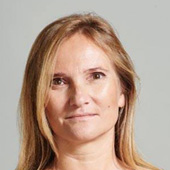 Daniela Stock FAA BIOLOGY, MOLECULAR BIOLOGY, BIOENERGETICS, X-RAY CRYSTALLOGRAPHY
Daniela Stock FAA BIOLOGY, MOLECULAR BIOLOGY, BIOENERGETICS, X-RAY CRYSTALLOGRAPHY
Daniela Stock is a renowned structural biologist interested in molecular machines, molecular rotary motors and membrane proteins. She has redefined bioenergetics and has developed new insights into biological energy conversion.
-
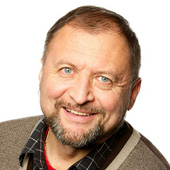 Fedor Sukochev FAA MATHEMATICS, ALGEBRA
Fedor Sukochev FAA MATHEMATICS, ALGEBRA
Fedor Sukochev is a world leader in finding novel analytic approaches to complicated interdisciplinary problems. He is an internationally recognised expert in three related but distinct areas: noncommutative analysis; non-commutative geometry and; non-commutative probability.
-
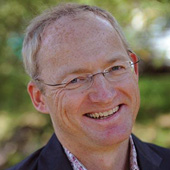 Toby Walsh FAA COMPUTER SCIENCE, ARTIFICIAL INTELLIGENCE
Toby Walsh FAA COMPUTER SCIENCE, ARTIFICIAL INTELLIGENCE
Toby Walsh has made important scientific contributions in three closely related areas: artificial intelligence, constraint programming and computational social choice. He has been a pioneer in theoretical artificial intelligence, building on ideas from fields including statistical physics, economics and game theory to study many complex and challenging optimisation problems such as scheduling and vehicle routing.
-
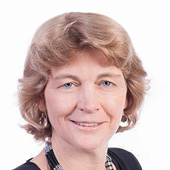 Naomi Wray FAA BIOLOGY, GENOMICS, GENETICS, STATISTICS
Naomi Wray FAA BIOLOGY, GENOMICS, GENETICS, STATISTICS
Naomi Wray is a leading complex trait statistical geneticist. She has contributed significantly to quantitative genetic and evolutionary selection theory, with applications in agriculture and medicine. Her theoretical work on the prediction of rates of inbreeding in populations undergoing selection, has led to changes in agricultural selection programmes worldwide.
New Corresponding Members
-
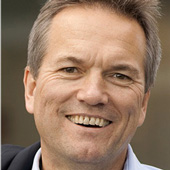 Matthias Hentze FAA MOLECULAR BIOLOGY
Matthias Hentze FAA MOLECULAR BIOLOGY
Professor Hentze is based in Heidelberg in Germany and is an early pioneer of RNA research. In collaboration with Australian scientists, his recent work has led to the discovery of hundreds of new RNA-binding proteins involved in gene regulation that foreshadow a new phase of our understanding of genome functions and metabolism.
-
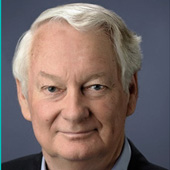 John Spence FAA PHYSICS
John Spence FAA PHYSICS
Professor Spence, based at Arizona State University, was born in Australia and is internationally recognised for his contributions to the development and application of X-ray lasers to biology and molecular movies, and to atomic-resolution electron microscopy.
Deceased Fellows and Corresponding Member
Six Fellows and one Corresponding Member passed away in 2016. Their achievements enhanced the global store of scientific knowledge and understanding, and their participation in the life of the Academy will be greatly missed.
Deceased Fellows
Deceased Corresponding Member
-
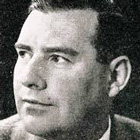 Professor Edward Slater FAA FRS (UK) 26 March 2016
Professor Edward Slater FAA FRS (UK) 26 March 2016
Awards, honours and recognition received by Fellows
The Academy comprises more than 500 of Australia's most distinguished scientists, elected for their outstanding research that has pushed back the frontiers of knowledge. Our Fellows continue to receive many prestigious honours and awards in recognition of their work.
Fellow in top 10
Academy Fellow Professor Terry Hughes was named one of the ten people who mattered in 2016 by science journal Nature, in recognition for his work documenting and alerting the world to the worst-ever coral bleaching event on the Great Barrier Reef.
Celebrating and supporting science
Through the generosity of Fellows, their families and colleagues, and like-minded individuals and organisations, the Academy presents a range of honorific awards, research grants and travelling fellowships each year. These awards celebrate and raise awareness of the achievements of both the person after whom they are named and the recipients, and contribute to the advancement of science in many fields of research.
The Academy Medal
The Academy Medal 2016 was awarded by Council to Australia’s former Chief Scientist, Professor Ian Chubb AC, at a special ceremony held at the Academy in November.
The event was attended by influential members of the community to celebrate Professor Chubb’s outstanding contributions to science. Professor Chubb’s illustrious career championing science—notably as Australia's Chief Scientist, Vice Chancellor of the Australian National University and President of the International Alliance of Research Universities—has provided opportunities for Australian scientists and researchers to flourish.
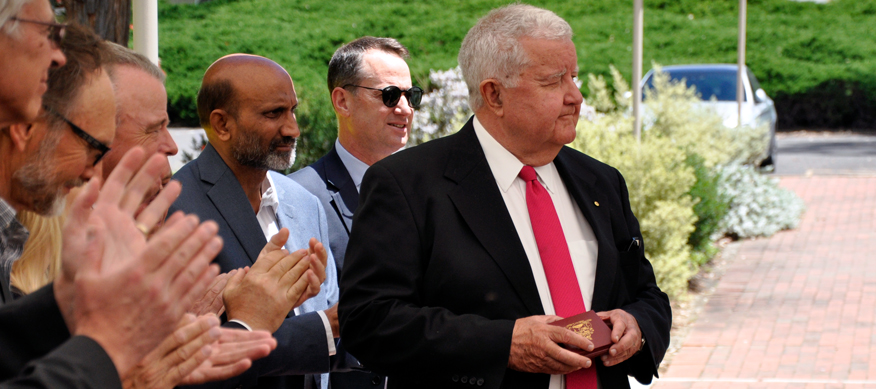
The new Max Day Fellowship
A major donation of $210,000 from the longest serving Fellow of the Academy, Dr Max Day AO FAA, was used to establish the annual Max Day Environmental Science Fellowship Award of up to $20,000. This will help PhD students or early-career researchers meet costs associated with their research or to supplement PhD scholarships. We sincerely thank Dr Day for his generosity.
110 applications were received for the inaugural Max Day Environmental Science Fellowship Award. The inaugural awards will be presented at Science at the Shine Dome in 2017.
We thank Doug Hooley for his generous support of $20,000 to the Max Day Environmental Science Fellowship Award. Mr Hooley has pledged his ongoing support of the award.
Honorific awards
Central to the purpose of the Academy is the recognition and support of outstanding contributions to the advancement of science. Our honorific awards recognise distinguished research in three categories: early-career scientists up to 10 years post PhD, mid-career scientists 8 to 15 years post PhD, and career awards to scientists for life-long achievement.
The 2017 awards were announced in November 2016 and most will be presented at the Academy’s annual flagship event, Science at the Shine Dome, in May 2017.
5 career, 3 mid-career and 9 early-career research awards with $10,500 worth of associated honorariums and lecture funding.
Research, travel and conference awards
The Academy supports research through the sponsorship of research conferences that focus on rapidly developing fields of research, as well as support and funding for the presentation of lectures. We also award travelling fellowships for the exchange of scientific ideas, to promote Australian scientific capabilities internationally, and facilitate access to international research programs.
$316,000 worth of funding awarded to 20 applicants, to support scientific research, international travel and scientific conferences.
Awards from the National Committees for Science
Awards completed in 2016
Awarded the previous year, a range of conferences, lectures and fellowships were delivered in 2016.
National Committees for Science
The Academy's 22 National Committees for Science are widely representative of their disciplines. The committees aim to foster a designated branch or theme of natural science in Australia and to serve as links between Australian and overseas scientists in the same field. National Committees advise the Academy’s Council on Australia’s representation for the unions and multidisciplinary bodies of the International Council for Science (ICSU) and other international bodies.
National Committees:
had 205 members representing 62 organisations
linked to 31 member unions of the International Council for Science
We thank the organisations who support the valuable work of our National Committees.
International Council for Science
The International Council for Science (ICSU) is a non-government organisation with a global membership of 48 international scientific unions (ISUs) and interdisciplinary science bodies, and 120 national scientific bodies representing 140 countries. These organisations convene scientists within and across the disciplines to coordinate research and address issues of global significance. The Academy is Australia’s adhering body for ICSU and 31 ICSU organisations (20 scientific unions and 11 interdisciplinary bodies). Australian Professor David Black FAA is the current Secretary-General of ICSU.
The Academy meets responsibilities and obligations that arise from the ICSU memberships with the assistance of the National Committees for Science. These include nomination of Australian candidates for executive committee positions and appointment of voting delegates to general assemblies.
More about the Academy’s links with the International Council for Science
Member of ICSU and 31 international organisations
22 Australians in executive positions
14 Australians nominated for executive positions
390 Australians on subcommittees or taskforces
14 Australians voting delegates at 10 union general assemblies
Merger of ICSU with the International Social Science Council
A proposal to merge ICSU with the International Social Science Council (ISSC) was approved in principle at an extraordinary General Assembly in Oslo in October 2016. The councils of the two bodies will develop detailed transition plans, which will be put to a vote during a joint meeting of ICSU and ISSC members in October 2017 during the 32nd ICSU General Assembly in Taipei. If endorsed, the transition will be implemented and overseen by the ISSC and ICSU executives, with a founding General Assembly of the new organisation tentatively planned for October 2018.
The executives of both organisations unanimously endorsed the merger following the recommendation of a joint working group on the relationship between the two Councils. A merged body will aim to provide a unified, global voice for social and natural sciences. More information on the ICSU–ISSC merger
Australia wins major international meetings
2016 saw two winning bids for meetings of ICSU unions in Australia and several other bids made that will be voted on in 2017.
COSPAR 2020
The 43rd Scientific Assembly of the Committee on Space Research (COSPAR) will be held in Sydney in 2020 following a successful bid by a team led by UNSW Canberra and the Academy. The meeting is held every two years, with the 2020 event expected to bring around 3,000 international space experts from more than 50 countries to Australia.
Representatives from major research and educational institutions including CSIRO, Geoscience Australia, the Bureau of Meteorology and the Square Kilometre Array, as well as international agencies, universities and industries, will attend, networking with leaders from around the globe.
The bid was led by Professor Russell Boyce, Director of UNSW Canberra’s space program and Chair of the Academy’s National Committee for Space and Radio Science. Australia’s Chief Scientist Dr Alan Finkel AO FAA FTSE and the Academy’s Secretary for the Physical Sciences, Professor Jim Williams AM FAA FTSE, were also involved.
SCAR 2020
The Scientific Committee on Antarctic Research (SCAR) will hold its Delegates’ Meeting and Open Science Conference in Hobart in August 2020. More than 700 Antarctic scientists and academics from over 40 countries are expected to attend the SCAR events, providing a significant boost to the Tasmanian economy and showcasing the State as a key Antarctic hub.
As a consequence of SCAR’s decision, the Council of Managers of National Antarctic Programs (COMNAP) will also host its Annual General Meeting in Hobart in August, with more than 100 Antarctic program managers and operational experts to attend.
The bid for SCAR was led by the Australian Academy of Science’s National Committee for Antarctic Research (NCAR) in partnership with the Tasmanian Government and Australian Antarctic Division. The events will provide an opportunity to recognise and celebrate Australia’s proud legacy of more than 100 years of leadership in Antarctic science, environmental stewardship, operations and policy.
Early- and mid-career researchers
EMCR Forum

The Australian Early- and Mid-Career Researcher (EMCR) Forum is the national voice of Australia's emerging scientists, representing researchers who are up to 15 years post-PhD or other research higher degree, irrespective of their professional appointment. The Forum is supported by the Academy.
In 2016 the Forum developed a five-year strategic plan to support Australian EMCRs and was involved in organising the Australia–Indonesia Science Symposium. It made 4 submissions to government consultations to provide the perspective of the next generation of scientific leaders.
Future Leaders

The Forum ran its fourth national meeting for EMCRs—Science Pathways 2016: Future Leaders—which was attended by 193 EMCRs, including 8 EMCRs who were supported by a scheme that facilitated the attendance of those with caring responsibilities. The Forum thanks the sponsors who made the event possible.
180 Seconds of Science competition

EMCRs were invited to showcase their innovative research to the public in just 180 seconds. The videos made scientific topics as diverse as volcanos, flexible solar cells and the behavioural effects of violent video games accessible to everyone.
The EMCR Forum and the Royal Society of New Zealand Early Career Forum worked together on the competition across Australia and New Zealand. The EMCR Forum thanks its award partners who enabled it to provide EMCRs with a platform to communicate their science and win great prizes:
- CSIRO SME Connect
- CSL Ltd
- New Zealand Ministry of Business, Innovation and Employment
- Garvan Institute of Medial Research
- John Morris Group.
Academy support for EMCRs
10 Early Career Fellowships for the France–Australia Science Innovation Collaboration (FASIC) program awarded
6 EMCRs attended Japan Society for the Promotion of Science (JSPS) HOPE meeting
14 Japan Society for the Promotion of Science Postdoctoral Fellowships awarded
8 SIEF-AAS Fellowships awarded to Australia-based young researchers to attend the 2016 Lindau Nobel Laureates Meeting
1 SIEF-AAS Fellowship awarded to an Australia-based young computer scientist to attend the 2016 Heidelberg Laureate Forum
1 nomination to the APEC Science Prize for Innovation, Research and Education (ASPIRE) 2016
1 visit to the National Institutes of Health in the USA (Adam J Berry Fund) awarded
26 US graduate students travelled to Australia to take part in the East Asia and Pacific Summer Institutes (EAPSI) program
Academy events supporting EMCRs
132 EMCRs attended the Theo Murphy High-Flyers Think Tank and Frontiers of Science events, both supported by the Theo Murphy (Australia) Fund, courtesy of the Royal Society of London
49 EMCRs attended the Science at the Shine Dome EMCR Program
Regional reports
The Academy’s regional groups are state-based, with a Chair appointed to each group by Council. The groups organise events for Fellows throughout the year.
Operational excellence
Philanthropy
Special thank you
We acknowledge the following individual donors who, in 2016, became members of the Academy’s President’s Circle. Donors to the President’s Circle contribute donations of or valued at $100,000 – $499,000.
- Dr Max Day AO FAA
- Dr Anna Rickards
We also acknowledge the following individual donors who in 2016 became members of the Academy’s Science Circle. Donors to the Science Circle contribute donations of or valued at $20,000 – $99,000.
- Estate of the Late Professor Jan Anderson FAA FRS
- Dr Eldon Ball
- Professor Marilyn Ball FAA
- Doug Hooley PSM
- Estate of the Late Professor Paul Ivan Korner AO FAA and Mrs Jennifer Korner
- Dr Margaret R Middleton
- Professor David Solomon AC FAA FRS FTSE
The Academy thanks these individuals who join a distinguished list of donors who have, over time, contributed an outstanding level of support to the Academy. We’ll publish these names on the donor boards located in the foyer of the Shine Dome at the Academy in Canberra.
New partnership with University of Melbourne for women in science
When microbiologist Professor Nancy Millis passed away in September 2012, some of her colleagues at the University of Melbourne came up with the idea that, by donating sufficient funds, they would enable a medal to be struck in her honour—and thus began the Nancy Millis Medal for Women in Science.
Major support of $210,000 from the University of Melbourne to act as a partner in underpinning the award of the Nancy Millis Medal in perpetuity was announced. The university’s support will allow the Academy and the university to work together in fully celebrating each recipient of the medal through joint recognition by both organisations.
A gift from Professor David Solomon
Distinguished scientist Professor David Solomon AC FAA FRS FTSE made a generous commitment to support our 2017 national speaker series, Plastic Fantastic, with further support to the Academy’s Futures Fund.
Our national speaker series is part of our national engagement program designed to bring science to a broader Australian audience. We thank Professor David Solomon for supporting this valuable public outreach initiative.
Annual Giving Program
We launched our new Annual Giving Program in 2016 that enables us to continue to nurture minds and expand horizons. The Annual Giving Program provided annual, untied, renewable income for the day-to-day running of the Academy. Offering donors the option of regular giving (monthly) and multi-year payments allows for better forward planning and creates a baseline of philanthropic support upon which new programs and major gift campaigns can be built. All tax-deductible donations, of any amount, are greatly valued and can make a considerable impact.
Make a donation or call Isobel Griffin on 02 6201 9471 for more information.
Governance
The Academy is managed by a Council of 17 Fellows, which met four times. To ensure Academy business was managed effectively between Council meetings, the Executive Committee (EXCOM) met five times, and the Finance Committee twice.
The Finance Committee comprised the Executive Committee, Council representative Professor Ian Hume FAA, Fellows’ representative Professor Michael Barber FAA FTSE and external members Mr Mark Waldron and Mr David Holmesby (Audit Committee Chair).

Academy website
Our website received more than 462,000 visits in 2016.
Our most popular pages were our climate change and immunisation Q&A booklets.
Infrastructure
The Academy owns two unique and historic buildings in Canberra: the national heritage listed Shine Dome and Ian Potter House.
This year the Academy replaced and repaired the concrete moat surrounding the Shine Dome, and commenced planning and procurement to upgrade the audio visual system in the Shine Dome’s Ian Wark theatre. The system will be state-of-the-art, and will be ready for the Academy's flagship annual event, Science at the Shine Dome in May 2017.
The Academy has commenced preparations of a five-year capital management plan to schedule capital upgrades and maintenance for both buildings.
Staff
We farewelled Chief Executive, Dr Sue Meek, in July and welcomed new Chief Executive, Ms Anna Maria Arabia, in October. Ben Patterson acted as the Chief Executive in the intervening period.
In June we welcomed Dr Wafa El-Adhami as SAGE Executive Director and farewelled our Director, Communications and Outreach Ms Kylie Walker.
The number of employees increased from 61 (full-time equivalent 49) to 68 (FTE 61) during the year. At year end there were 47 female and 21 male employees.
Due to program changes and natural attrition, 21 people left the Academy and 28 people were recruited, representing significant turnover of 46%.
